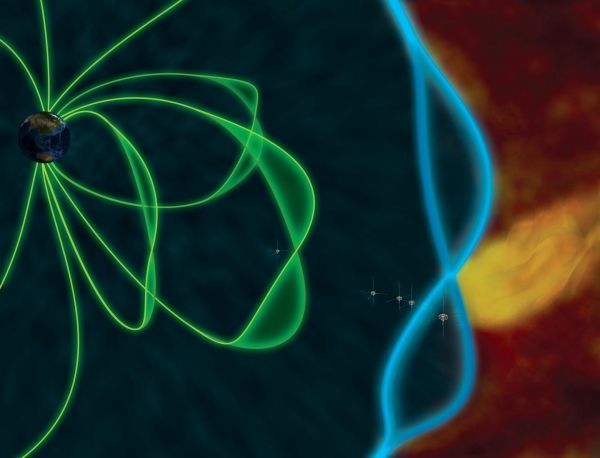The Earth’s magnetic shield booms like a drum when it is hit by strong impulses, according to new research from Queen Mary University of London.
As an impulse strikes the outer boundary of the shield, known as the magnetopause, ripples travel along its surface which then get reflected back when they approach the magnetic poles.
The interference of the original and reflected waves leads to a standing wave pattern, in which specific points appear to be standing still while others vibrate back and forth. A drum resonates like this when struck in exactly the same way.
This study, published in Nature Communications, describes the first time this effect has been observed after it was theoretically proposed 45 years ago.
Read more at Queen Mary University of London
Image: Artist rendition of a plasma jet impact (yellow) generating standing waves at the magnetopause boundary (blue) and in the magnetosphere (green). The outer group of four THEMIS probes witnessed the flapping of the magnetopause over each satellite in succession, confirming the expected behaviour/frequency of the theorised magnetopause eigenmode wave. (Credit: E. Masongsong/UCLA, M. Archer/QMUL, H. Hietala/UTU)


